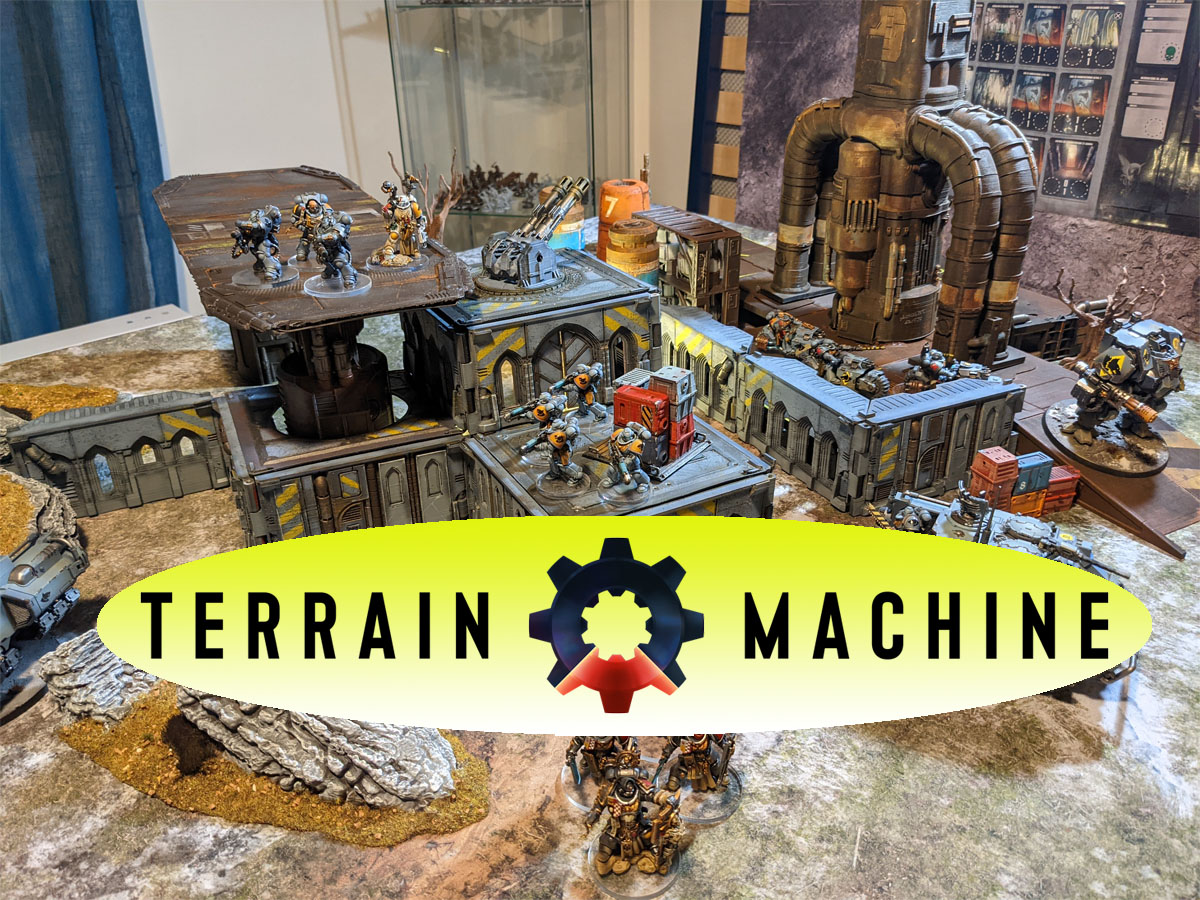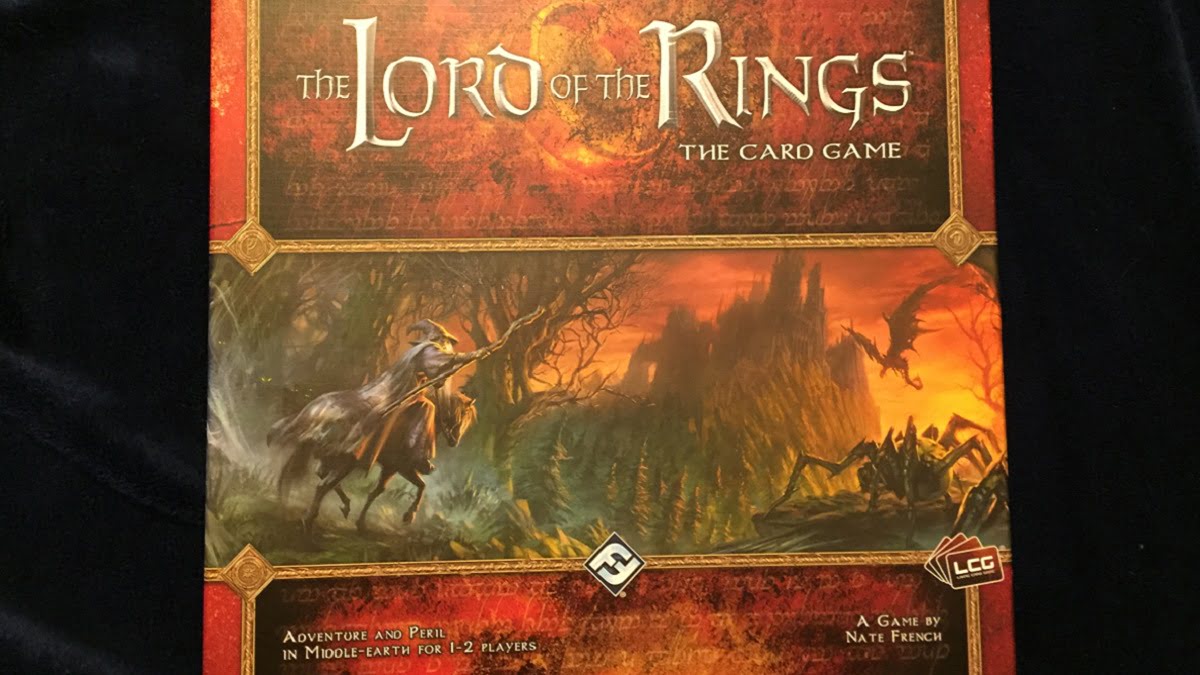Let’s say you’re planning a campaign for Warhammer 40,000 and you’ve got a vision for the type of battleground you want. You search different terrain companies, but nothing quite matches the vision in your head. Not to mention that some of those prices for terrain kits are pretty astronomical. How are you going to bring your vision to life?
Enter Terrain Machine
Terrain Machine is a web-based subscription app allowing gamers to design their own terrain for miniature wargames, save those designs, and print them out on 3D printers. It’s the first Kickstarter project by Imperial Terrain, a 3D-printed sci-fi wargaming design shop that sells both printed models and printable STL files. It is currently seeking funding on Kickstarter.
There are four different backer levels, starting at $35. That first level will provide 3 months of unlimited downloads of designs the backer creates with Terrain Machine. Each additional level increases the number of months of unlimited downloads: Level 2 provides 6 months, Level 3 12 months (and beta access), and Level 4 provides lifetime unlimited downloads, as well as “Live Blueprint Sessions” with the Imperial Terrain designers to discuss upcoming features and ask questions.
New to Kickstarter? Check out our crowdfunding primer.
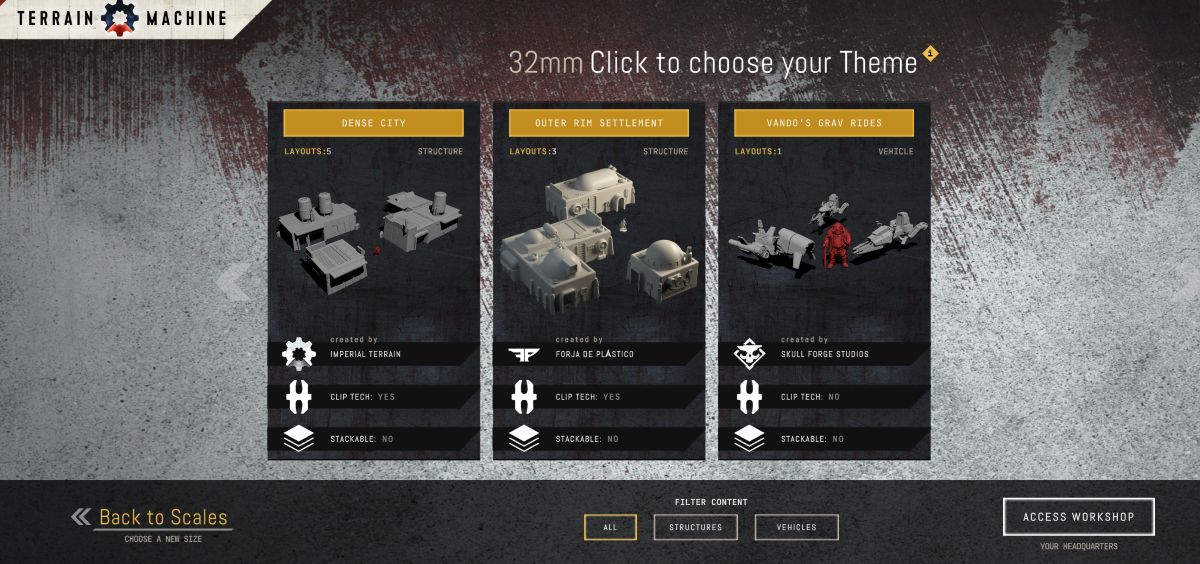
Designing a Terrain Machine Model
Note: my experience with Terrain Machine is with a demo version of the app, and features and menus are likely to change and expand.
When you log into the app via your web browser, you’ll start by choosing the terrain scale that you’d like to build. Currently in the demo, you can select 28mm, which is appropriate for games like Warhammer 40K and Necromunda, and 32mm, for Star Wars: Legion. Other scales and game systems are planned for, but not yet available.
From there, you’ll choose the type of model you want to design. As I’ve been playing Warhammer 40,000 games, I chose to work on parts to make some modular terrain for that system.

I decided to start designing a wall. I was presented with a customizable wall in a 3D environment where you can easily rotate the model and zoom in and out with your mouse. There are two selectable halves of the wall. Clicking on either of those gives you options that you can choose for the wall’s appearance.
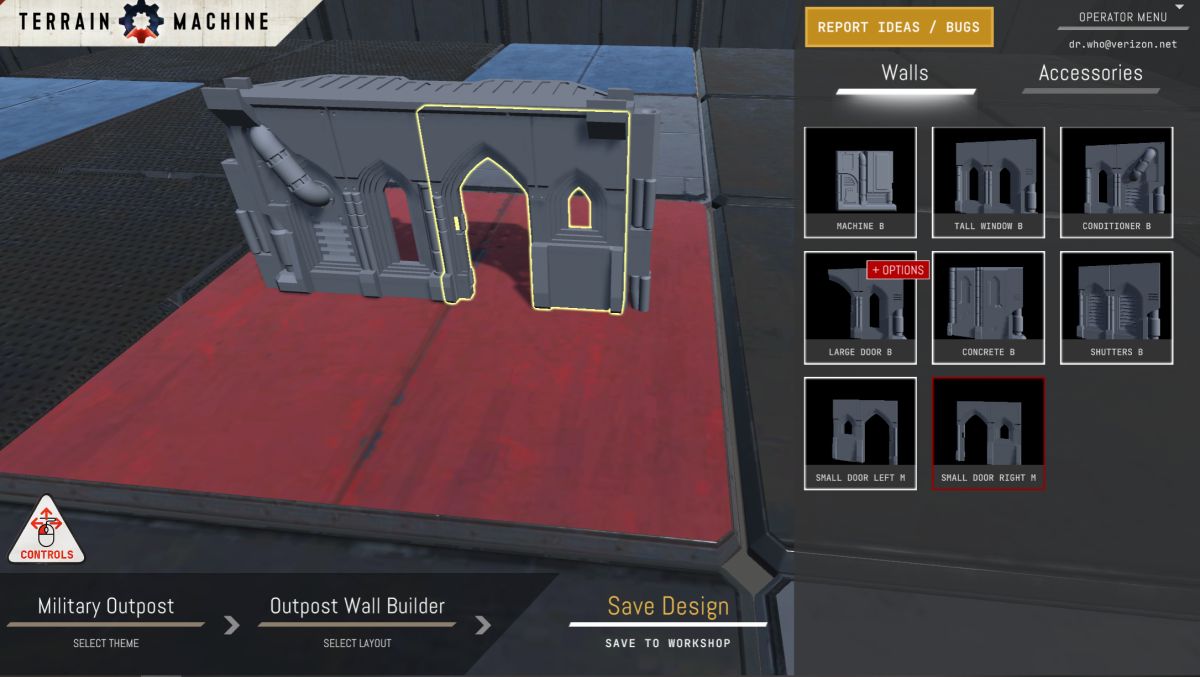
You can also add greeblies to your walls to make them more interesting. By clicking on the accessories button, you’ll find several options to put different objects onto the interior of your wall. These accessories can be freely positioned on the wall’s surface.
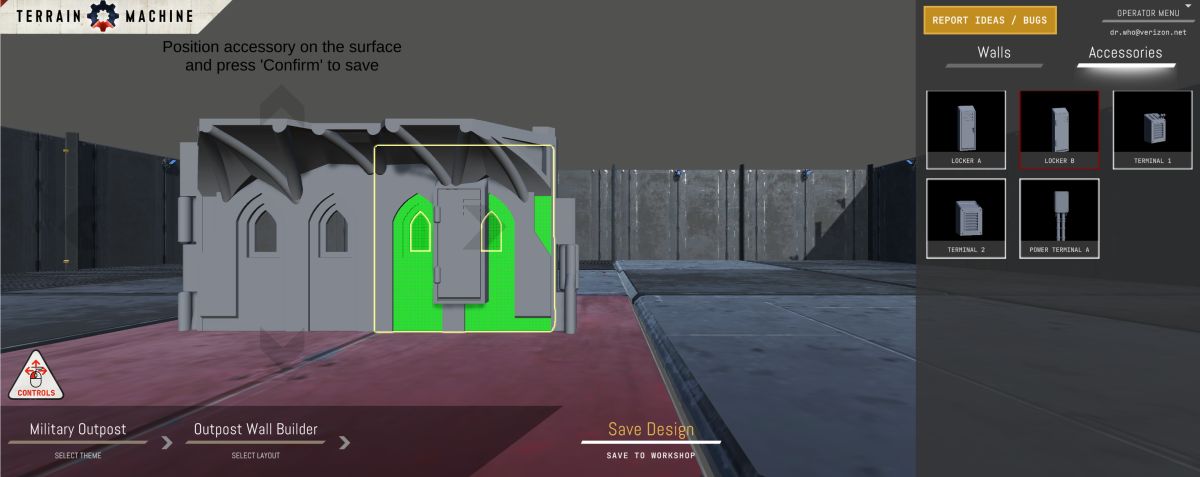
Once you’ve created a model to your liking, you can save the design to your Terrain Machine account.
Printing a Terrain Machine Model
When you’re ready to get to printing, the first thing you’ll do is go to your saved models and click “download” for the model you want to print. Terrain Machine will then generate an STL file, which you can save to your computer and import into your 3D slicing software. In my case, I was going to print on an FDM printer, so I imported the wall into Cura.
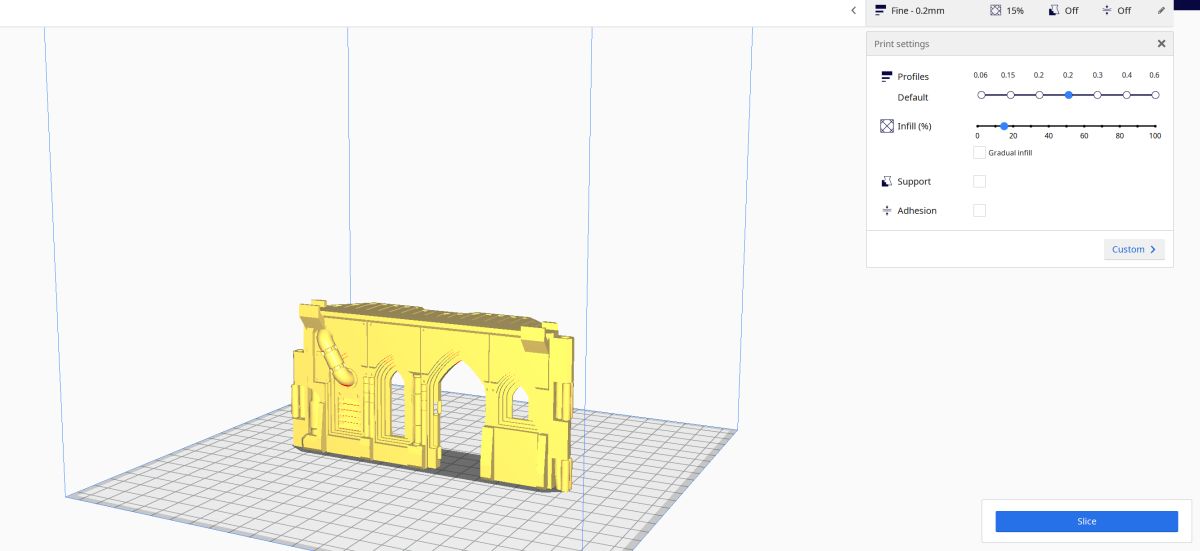
These models are designed to print without supports, so all you have to do is make sure the settings for your printer and material are correct. You then slice the model, generating the file that your printer will use to print it.
Loading that file into my printer, I set it to work.
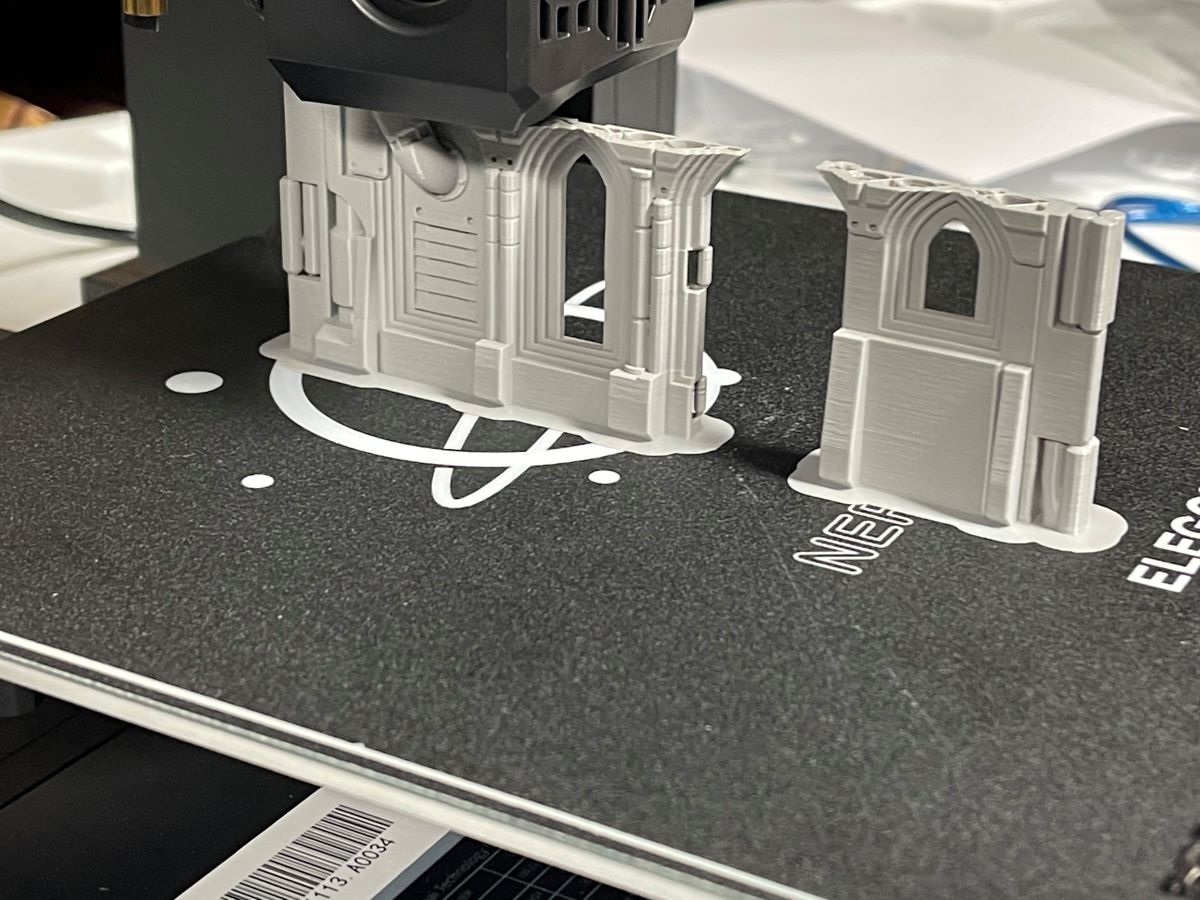
A few hours later, the model was done and I could pull it off of the print bed. There are supports on the sides between the tabs which easily snap off, leaving me with this:
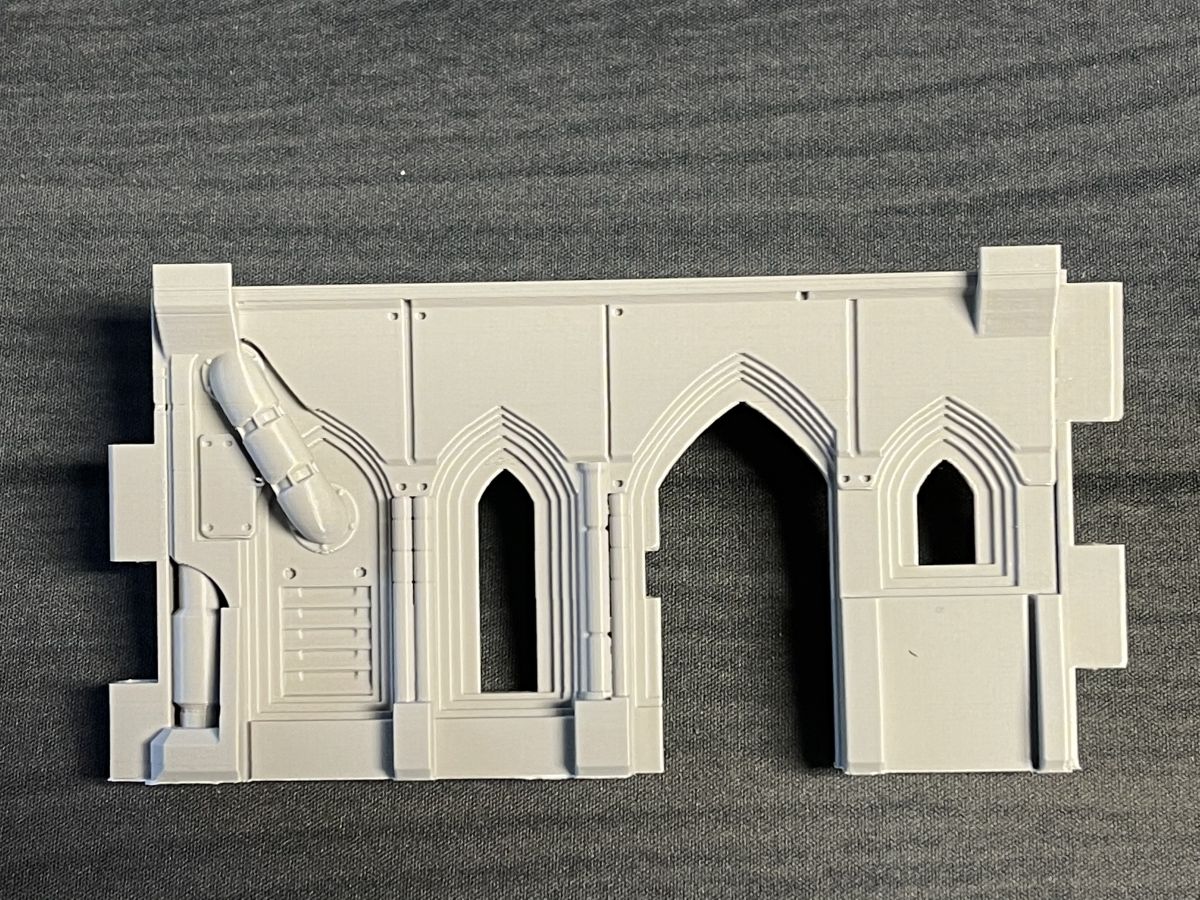
I wanted to print a few more pieces to see how they’d turn out, and how well they’d fit together. Walls easily combine at the corners, and you can lock them into place by threading a piece of filament or wire through the holes in the tabs. Roofs fit onto tabs at the top of the wall pieces. You can make multiple levels of buildings, but be sure not to position any accessories too low on your upper walls, otherwise they won’t fit properly when adding levels.
Other than popping out the support pieces, I didn’t do any cleanup on the models I printed.
You can test drive the demo version of the app here. Note that you will be able to design terrain pieces, but for the demo you will be unable to download and print STL files.
Why You Should Back Terrain Machine
Imperial Terrain founder Dave Lawson says on the campaign page for Terrain Machine that he set out to make a system whereby gamers with no 3D modeling experience could customize and print their own terrain, easily creating unique setups on their tables. And using the app couldn’t be easier. It’s clearly laid out and intuitive to use. Even better, the few supports that the models will need for printing are already baked into the designs, so you’ll have very little cleanup to do once you’ve printed them.
The models look great, besides. I don’t currently play Star Wars: Legion. But looking at the models available to print has me sorely tempted to start printing some of them out. And then, once I have a table full of Star Wars terrain, I suppose I’ll just have to pick up a starter box for the game. Isn’t that how it always starts with gamers?
An app like Terrain Machine will live or die on the options available to its subscribers. From looking at the Kickstarter page, there will be a lot more choices available once the Kickstarter delivers to backers. In addition to the features that will be available to all subscribers, they will also be offering Add-On Themes, which will be provided by outside 3D designers. These will be available as $11 add-ons to your pledge, and will be downloadable for as long as the period of your subscription.
A good reason to back the Kickstarter rather than wait for a retail release is the pricing model. Pledge levels in the Kickstarter provide unlimited downloads for whatever period of time your level states. However, after the Kickstarter, you will be paying per download as opposed to by a set period of time. Hopefully the pricing for Terrain Machine will remain competitive post-Kickstarter, but it will be hard to beat the value of unlimited downloads.
Some painted Terrain Machine models. Images by Imperial Terrain.
I was impressed with the ease of using Terrain Machine, and how nice the models look when printed out. If you play multiple game systems and want to have terrain for each of them, then backing the Kickstarter campaign would be a very cost-effective way of doing this. And even if you just play one game, you can still produce as much terrain as you would ever want for your game table. You can quickly design and print tons of unique structures, customizing them to your taste.
For more information or to make a pledge, visit the Terrain Machine Kickstarter page!
Click here to see all our tabletop game reviews.
![]() To subscribe to GeekDad’s tabletop gaming coverage, please copy this link and add it to your RSS reader.
To subscribe to GeekDad’s tabletop gaming coverage, please copy this link and add it to your RSS reader.
